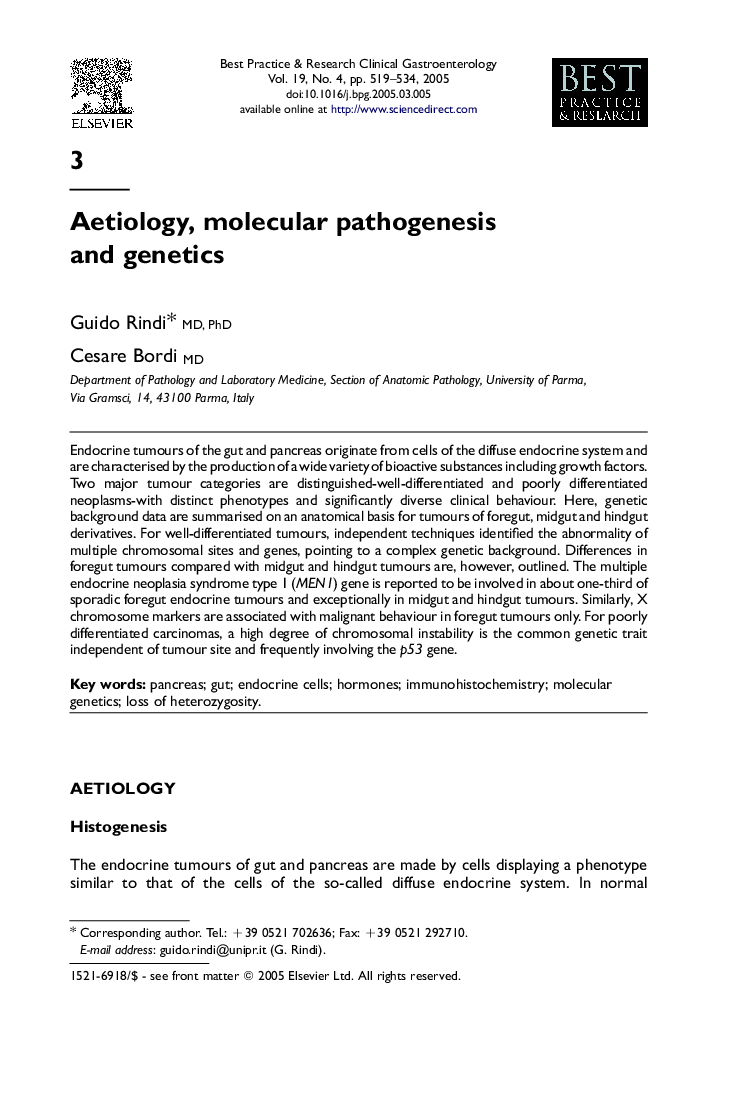| Article ID | Journal | Published Year | Pages | File Type |
|---|---|---|---|---|
| 9236394 | Best Practice & Research Clinical Gastroenterology | 2005 | 16 Pages |
Abstract
Endocrine tumours of the gut and pancreas originate from cells of the diffuse endocrine system and are characterised by the production of a wide variety of bioactive substances including growth factors. Two major tumour categories are distinguished-well-differentiated and poorly differentiated neoplasms-with distinct phenotypes and significantly diverse clinical behaviour. Here, genetic background data are summarised on an anatomical basis for tumours of foregut, midgut and hindgut derivatives. For well-differentiated tumours, independent techniques identified the abnormality of multiple chromosomal sites and genes, pointing to a complex genetic background. Differences in foregut tumours compared with midgut and hindgut tumours are, however, outlined. The multiple endocrine neoplasia syndrome type 1 (MEN1) gene is reported to be involved in about one-third of sporadic foregut endocrine tumours and exceptionally in midgut and hindgut tumours. Similarly, X chromosome markers are associated with malignant behaviour in foregut tumours only. For poorly differentiated carcinomas, a high degree of chromosomal instability is the common genetic trait independent of tumour site and frequently involving the p53 gene.
Keywords
Related Topics
Health Sciences
Medicine and Dentistry
Endocrinology, Diabetes and Metabolism
Authors
Guido MD, PhD, Cesare MD,
